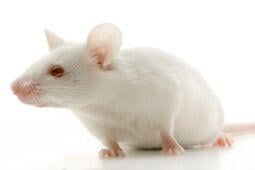In Vivo Toxicology

In vivo toxicology is the scientific discipline which studies toxic effects and impacts of specific compounds on defined laboratory animal species for the aim to predict the potential adverse effects and estimate of safety margins for humans.
The studies vary from acute (single dose) to sub-chronic (repeated dose) up to chronic, reproductive & developmental toxicology (multiply dosing regimens). A special part is a genetic toxicology performed in vivo. Different ways of exposure e.g. oral, intravenous, intracutaneous, intradermal, intraperitoneal, intramuscular, topical, inhalation etc. are applied in a variety of species such as mice, rats, rabbits, and guinea pigs... Read more...
Preclinical Studies (Efficacy and Safety) for Drugs
Preclinical studies are a requisite part during successful developing a drug from the discovery phase to its successful entry into the market. Extensive preclinical research must be conducted prior to going to testing drugs on humans within the clinical testing (first-in-man studies - Phase I). These comprise in vitro and in vivo experiments using broad-ranging doses of the study drug to obtain preliminary efficacy, toxicity – safety and pharmacokinetic information.
| Guideline | Description |
| ICH M3 (R2) | Nonclinical safety studies for the conduct of human clinical trials for pharmaceuticals
|
Safety Assessment of Chemical Substances and Preparations (REACH), Biocides, Pesticides, Food Ingredients etc.
Acute and Subacute Studies in vivo
Effect of a single dose on a particular animal species.
Duration: From several days to after a single dose
Parameters in acute studies: Mortality, Clinical pathology, Gross necropsy, Weight change, Signs of toxicity.
Parameters in sub-acute studies: Mortality, Weight change, Signs of toxicity, Clinical pathology, Pathology and histopathology
| Guideline | Description |
| OECD 425, 420, 423, EC B.1 | Acute oral toxicity |
| OECD 404, EC B.4* | Acute dermal irritation/corrosion in vivo |
| OECD 405, EC B.5* | Acute eye irritation / corrosion in vivo |
| OECD 402, EC B.3 | Acute dermal toxicity |
| OECD 429, EC B.42 | Skin sensitisation - Immunotoxicity / Local Lymph Node Assay: |
| OECD 403/436, EC B.2, B.52 | Acute Inhalation Toxicity |
| OECD 407, EC B.7 | Repeated dose oral toxicity, 28d (subacute study) |
| OECD 410, EC B.9 | Repeated dose dermal toxicity 21/28 d (subacute study) |
| OEC 412, EC B.26 | Subacute Inhalation Toxicity: 28-Day Study |
* only for specific cases that can’t be resolved by in vitro methods
Subchronic & Chronic Studies in vivo
Establishing a “no observable effect level” (NOEL) and characterization of dose-response relationships following repeated doses. Identification and determination of specific organs affected after repeated administration. Prediction of a reasonable and appropriate dosing for chronic exposure studies. In case of chronic studies evaluation of the cumulative toxicity of chemicals and assessing a carcinogenic potential.
Duration: From 28 days, through 90 days up to 6 / 12 / 24 months
Parameters: Mortality, Weight change, Signs of toxicity, Clinical pathology, Pathology and histopathology
| Guideline | Description |
| OECD 408, EC B.26 | Repeated dose oral toxicity, 90d: |
| OECD 409, EC B.27 | Repeated dose oral toxicity, 90d: |
| OECD 411, EC B.28 | Repeated dose dermal toxicity 90 d |
| OECD 452, EC B.30 | Chronic oral toxicity, 180d: |
| OECD 453, EC B.33 | Combined chronic toxicity/carcinogenicity studies |
Reproductive & Development Studies in vivo
Reproductive studies in vivo determines a potential adverse effects of a test item on fertility and reproductive performance / sexual function in adult males and females and as well as developmental toxicity in the offspring (UNECE).
Development (teratology) Studies in vivo pertains to adverse toxic effects to the developing embryo or foetus, resp. adverse effects induced during pregnancy.
Duration: Varies depending upon end point.
Parameters: According to OECD Guidelines
| Guideline | Description |
| OECD 414, B.31 | Pre-natal developmental toxicity study (rat and rabbit) |
| OECD 415, B.34 | One generation reproduction study |
| OECD 416, B.35 | Two generation reproduction study |
| OECD 421 | Reproduction/ Developmental Toxicity Screening Test |
| OECD 422 | Combined Repeated Dose Toxicity Study with the Reproduction/ Developmental Toxicity Screening Test: |
Genetic Toxicology in vivo
Studies of Genetic toxicology are applied to assess the potential of a test material to induce genetic damage in vivo (gene mutations or chromosome damage). They are performed once the in vitro genotoxic alternative have been performed first, and the results been evaluated properly.
| Guideline | Description |
| OECD 474 | Mouse micronucleus assay |
In vivo Biocompatibility Testing of Medical Devices
Biocompatibility of medical devices (based on prepared extracts acc. to ISO 10993-12) is performed in InterBioTox laboratories by using various standard animal studies to evaluate: the mutagenic potential (genotoxicity), the potential to cause cancer (carcinogenicity) and/or to act teratogenic, the potential to activate the clotting system, the tissue reaction after implantation, the potential skin irritation and allergic sensitization after contact with skin and possible toxic effects in the organism.
| Guideline | Description |
| ISO 10993-3 | Biological evaluation of medical devices Part 3: Tests for genotoxicity, carcinogenicity and reproductive toxicity (specific tests) |
| ISO 10993-4 | Biological evaluation of medical devices Part 4: Selection of tests for interactions with blood |
| ISO 10993-6 | Biological evaluation of medical devices Part 6: Tests for local effects after implantation |
| ISO 10993-10 | Biological evaluation of medical devices Part 10: Tests for irritation and skin sensitization |
| ISO 10993-11 | Biological evaluation of medical devices Part 11: Tests for systemic toxicity |
Didn't find what you are looking for?
or
